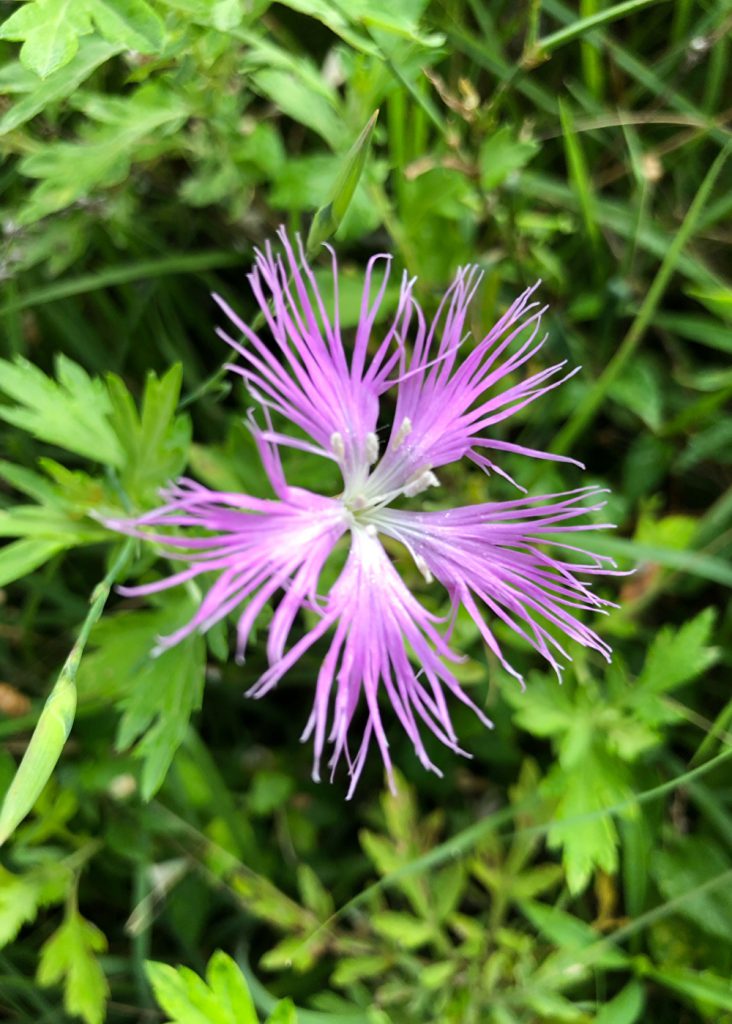
When it’s so hot, I suddenly remember the plateaus and mountains of Shinshu. On the way back from the Yatsugatake traverse, I stopped by the Kirigamine plateau. I found Nadeshiko (dianthus) of the photo there. The cut of the flower is deeper than that of a normal Nadeshiko, and it is lace-shaped like a flower of Karasu-uri (crow squirrel). When I looked it up, it was a variety called Ezo Kawara Nadeshiko. Generally, Nadeshiko is a general term for the genus Dianthus excluding carnations, and about 300 species are distributed mainly in the Northern Hemisphere, such as Asia, Europe, and North America. Among them, four species such as Kawara Nadeshiko and Hama Nadeshiko grow naturally in Japan. Kawara Nadeshiko is distributed all over Japan except Hokkaido, but the Nadeshiko of the photo was found in Hokkaido and named Ezo Kawara Nadeshiko. Later, it was also found in the alpine regions north of central Japan, and it is speculated that this is the original species of Kawara Nadeshiko. The Edo period was an era when an unprecedented horticultural boom occurred, and it seems that the varieties of Ezo Kawara Nadeshiko were improved during this period, and the Kawara Nadeshiko was born.
こう暑いとつい思い出すのは信州の高原や山々。八ヶ岳縦走を終えた帰りに霧ヶ峰高原に立ち寄りました。そこで見つけたのが写真のナデシコです。通常のナデシコより花の切れ込みが深く、カラスウリの花の様にレース状になっています。調べてみるとエゾカワラナデシコという品種です。一般にナデシコと呼んでいるのは、カーネーションを除いたダイアンサス属の総称で、原産地はアジア、ヨーロッパ、北アメリカなど、北半球地域を中心に約300種類が分布しています。その内、カワラナデシコをはじめ、ハマナデシコなど4種が日本に自生しています。カワラナデシコは北海道を除いた日本全土に分布していますが、写真のナデシコが北海道で発見され、エゾカワラナデシコと命名されました。その後、中部以北の高山地帯でも見つかり、これがカワラナデシコの原種ではないかと推測されています。江戸時代は空前の園芸ブームが起こった時代で、この時代にエゾカワラナデシコを品種改良し、カワラナデシコが誕生したようです。
